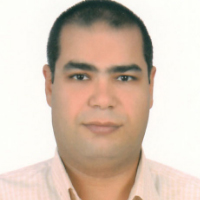Effectiveness of levocetirizine in treating allergic rhinitis while retaining work efficiency
Published on: 25th April, 2023
The manifestation and severity of Allergic rhinitis symptoms show diurnal variation which negatively impacts the patient’s quality of life, day-to-day activities, and productivity at the workplace. The symptoms worsen at night or early morning and therefore administration of levocetirizine towards evening may be more acceptable. Consequently, the present study evaluated the effectiveness of evening Levocetirizine administration on 24-hour symptom control, Physical and mental health, and daytime somnolence in patients with allergic rhinitis the study was a prospective, open-labeled, single-arm, two-center, observational study among patients with allergic rhinitis. Levocetirizine was prescribed as 5 mg or 10 mg once a day evening oral dose for at least 7 days before sleep. The 24-hour total nasal symptom scores (TNSS) for self-reported signs and symptoms of allergic rhinitis were recorded. Additionally, study evaluations included the SF-12 scale (Quality of Life), Stanford Sleepiness Scale (degree of sleepiness), and work productivity and activity impairment (WPAI) questionnaires. These evaluations were performed at baseline (Day 0) and at scheduled intervals of Day 1 (24-hour), Day 3, and Day 7. Results demonstrated that evening administration of Levocetirizine facilitates 24-hour symptom control while having no significant effect on daytime somnolence, daily activities, and the work productivity of patients.
Open heart surgery in Nigerian children the need for international and regional collaboration: The Bayelsa and Enugu experience
Published on: 9th July, 2021
OCLC Number/Unique Identifier: 9124692893
Background: Children with congenital heart diseases (CHD) often require palliative or definitive surgical heart interventions to restore cardiopulmonary function. Lack of early cardiac intervention contributes to large numbers of potentially preventable deaths and sufferings among children with such conditions.
Objectives: The aim of this study was to highlight our experience and the importance of international and regional collaboration for open heart surgery in children with CHD and capacity building of local cardiac teams in Bayelsa and Enugu States.
Methodology: In November 2016, a memorandum of understanding (MOU) was signed by the managements of FMC, Yenagoa, Bayelsa State, UNTH, Enugu and an Italian-based NGO- Pobic Open Heart International for collaboration in the area of free open heart surgery for children with CHDs and training of local cardiac teams from both institutions either in Nigeria or in Italy. Patients for the program were recruited from Bayelsa and Enugu States with referrals from all over the country with combined screening and selection done in UNTH. Selected patients were operated on and funded free of charge by the Italian NGO. Hands on training of the local cardiac teams and cardiac intervention was done twice yearly in Nigeria.
Result: From inception of the program in November, 2016 to May, 2019 a total of 47 children (21 Males, 26 Females; age range 6 months to 14 years) with various types of congenital heart defects had free open heart surgery from the program with 41 surgeries done in UNTH & 6 in Italy (complex pathologies). Also, home cardiac teams from UNTH and FMC, Yenagoa gained from on-site capacity training & retraining from the Italian cardiac team both in Nigeria and in Italy. The Success rate was 95.7% (44) and Case Fatality rate was 4.3% (2).
Conclusion: There is a great efficacy in early cardiac intervention. This is with respect to a high success rate and minimal Case Fatality seen in this study. This was achieved through Regional and international collaboration.
Prevalence and pattern of congenital heart disease among children with Down syndrome seen in a Federal Medical Centre in the Niger Delta Region, Nigeria
Published on: 11th April, 2022
Background: Down syndrome (DS), or Trisomy 21, is the most common genetic disorder in the world and congenital heart disease (CHD) contributes significantly to morbidity and mortality in this population. Early diagnosis and prompt cardiac intervention improve their quality of life. This study was done to determine the prevalence and pattern of congenital heart disease among children with Down syndrome seen at the Paediatric Cardiology Unit of Federal Medical Centre (FMC), Bayelsa State.Method: A prospective study of children with Down syndrome referred for cardiac evaluation and echocardiography at the Paediatric Cardiology Unit of FMC, Bayelsa State over four years from 1st January 2016 to 30th December 2019. Data on socio-demographic information, echocardiographic diagnosis, and outcome were retrieved from the study proforma and analyzed.Results: A total of 24 children with Down syndrome were seen over the study period. Their age ranged from 0 to 16years. The majority, 20 (83.3%) of the children with Down syndrome were aged 5 years and below. There were 13 males and 11 females with a male to female ratio of 1.2:1. A total of 23 (95.8%) of the children with Down syndrome had CHD. The most common CHD was AVSD (including complete, partial, isolated, or in association with other defects) in 66.6% followed by TOF in 8.3%. Multiple CHDs were seen in 43.5% of the children. Only one child (4.2%) had a structurally normal heart on echocardiography. All the children with Down syndrome had pericardial effusion of varying severity while 33% had pulmonary artery hypertension (PAH). The fatality rate among the children seen with Down syndrome over the study period was 34.8% and only one child (4.2%) had open-heart surgery with the total repair of cardiac defect during the study period. Conclusion: Morbidity and mortality are high among children with Down syndrome due to the high prevalence of CHD. Early referral, diagnosis, and prompt intervention are encouraged.
FDG PET/CT of uncommon cardiac angiosarcoma with bone metastases: a case report
Published on: 26th April, 2022
Cardiac angiosarcomas are rare malignant neoplasms with an aggressive clinical course. These are characterized by the absence of specific clinical findings, rapid growth with frequent metastasis at the time of diagnosis, correlated with poor prognosis, and reduced response to treatment. But with early diagnosis, more possibilities for treatment and survival can be provided. We report the case of a young woman diagnosed with right atrial angiosarcoma locally advanced with bone metastases detected by 18F-FDG PET/CT, which revealed distant disease extent at diagnosis, consequently, chemotherapy was started.
Chase out or unfortunate coping strategy? Analysis of urban settlement of the homeless addicts at public parks
Published on: 8th September, 2021
OCLC Number/Unique Identifier: 9231824192
Extant studies have labelled persons-with-addiction and the homeless as ‘invaders’ of public parks, aggressive/violent with psychiatric and medical disorders, a burden to the society, and transmitters of most deadly airborne or chronic diseases. Literature subtly discuses that such people must be chased out of the public. Yet, such studies have not concurrently analyzed from the viewpoint of urban parks users, the persons-with-addiction and the homeless people what needs to be done to improve the situation. Therefore, the study aims to explore whether problematic communities and subcultural factors make the disadvantaged resort to negative copping strategies when their legal means are blocked: how the other park users respond to the homeless drug addicts’ hardship: and the possible suggestions from all the park users. This is done with reference to social disorganization and Sub-culture theory, and through ethnographic research approach (8 months field observation) and in-depth-interviews with 27 participants. Our study found that persons-with-addiction and the homeless are not always aggressive/violent/harmful as they have been labelled. But only disadvantaged individuals who desire to emulate the ideals and ambitions of the middle class but lack resources to achieve such success. Being overwhelmed with such frustrations from their dilemmas, they consider themselves ‘double-failures’ and retreat into drug addiction and find abode in the public spaces. We therefore conclude that persons with addiction and the homeless people are not always violent and criminal persons who are to be chased out of public parks. But only disadvantaged individuals who need help for choosing a negative coping strategy.
Psychosocial factors among end-stage kidney disease patients receiving hemodialysis treatment in Kumasi, Ghana
Published on: 7th September, 2021
OCLC Number/Unique Identifier: 9252226609
Background: End-Stage Kidney Disease and its maintenance hemodialysis treatment force patients to make several lifestyle changes to cope with this debilitating illness. These changes often trigger the onset of notable psychological distress and depressive symptoms. Furthermore, these negative psychological experiences can undermine the effectiveness of the treatment and consequently worsening the health and quality of life of patients. Objective: The study assessed the psychological well-being among hemodialysis patients in Kumasi Metropolis. Further, it explored the relationship between these psychosocial factors and demographic characteristics.Materials and Methods: 30 hemodialysis patients were recruited from two dialysis units in Kumasi, Ghana. Participants were aged 18 and above and had been on hemodialysis treatment for more than three months. The Hospital Anxiety and Depression scale (HADS) was used to assess depression and anxiety whiles the Multidimensional Scale of Perceived Social Support was used to assess perceived social support of participants. Results: The majority of respondents were males (60%), relative to females. The study revealed that 80% were severely depressed, 20% met the criteria for severe anxiety. Some participants reported moderate social support 53.3%; perceived social support being inversely correlated with both depression (r = 0.41; n = 30; p < 0.05) and anxiety (r = -0.59; n = 30; p < 0.05). Income levels were inversely correlated with depression (r = -0.41, n = 30; p < 0.05). Conclusion: Findings of the study suggest that the psychological wellbeing of hemodialysis patients is compromised. Social support appears to alleviate depression and anxiety. Implications for patient treatment are discussed.
The identification of the true nature of pseudofungus structures as polyurethane catheter fragments
Published on: 4th January, 2022
OCLC Number/Unique Identifier: 9396195229
Pseudofungus structures in lymph node tissues have been reported on multiple occasions. Despite a variety of investigative tests including histochemical special stains and energy dispersive spectral analysis, the underlying nature and origin of these pseudofungus structures has never been clearly defined. The most common hypothesis suggests that they represent collagen fibers that become coated with iron and calcium. Herein, evidence is given that the pseudofungus structures identified in the lymph node tissues represent fragments of polyurethane catheters. The evidence includes both a comparison of these pseudofungus structures to fragments of polyurethane well documented in the literature and a comparison of polyurethane catheter scrapings to the pseudofungus structures identified in the literature. In both of these comparisons, the morphology of the polyurethane fragments are identical to the pseudofungus structures. This is the first definitive report identifying polyurethane catheter fragments as representing the true nature and etiology of pseudofungus structures in lymph node tissues.
Control of arterial hypertension and risk of new-onset of atrial fibrillation in patients with metabolic syndrome
Published on: 10th March, 2022
Background: An association between Atrial Fibrillation (AF) and Metabolic Syndrome (MS) a constellation of abnormalities (high blood pressure, hyperglycemia, dyslipidemia, and abdominal obesity), has been demonstrated. There have been many studies that have shown that elevated blood pressure (BP), was significantly associated with an increased risk of AF. It is uncertain whether maintaining the optimal BP levels can prevent AF in the patients with MS categorized as ‘high-risk’ patients.Objective: The aim of this study was to evaluate the influence of control of BP on the occurrence of new-onset atrial fibrillation in patients with Metabolic Syndrome.Methods: Into this observational study, was enrolled 435 consecutive patients (210 males and 225 females) aged 45-79 years who fulfilled criteria for MS. Participants were selected among primary and secondary care patients, who were receiving ongoing care for arterial hypertension in the period from November 2018 till November 2021. The study was conducted at outpatients in 5 Health Care Clinics (3 Secondary Health Care Clinics and 2 Primary Health Clinics). Patient were categorized according to their BP levels as Group 1-patients with controlled BP, {(patients aged < 65 years Systolic Blood Pressure (SBP) of 120 - 130 mmHg, patients aged ≥ 65 years SBP of 130 - 139 mmHg)} and Diastolic Blood Pressure (DBP), {(patients aged < 65 years of < 80 mmHg. but not < 70 mmHg; patients aged ≥ 65 years of 85 - 89 mmHg)}, or Group 2-patients with uncontrolled BP(> 130/80 mmHg),and in patients aged ≥ 65 years BP (≥ 140/90 mmHg ). Results: New-onset of AF, was more frequent in participants with uncontrolled BP, respectively (34.7% vs. 19.5%, p = 0.009).Patients with uncontrolled BP have more frequent persistent AF (15.2% vs. 0.04%) and permanent AF (0.08% vs. 0.02%), whereas there was not significant changes between groups in relation to frequency of paroxysmal AF, respectively (12.8% vs. 10.9%, p = 0.29). There was observed significant association of uncontrolled BP with: increased frequency of AF (OR = 2.193; 95% CI 1.390 - 3.439), persistent AF (OR = 3.931; 95% CI 1.771 - 8.084), permanent AF (OR = 4.138; 95% CI 1.383-12.381), LA. Dimension ≥ 2.2 cm/m2 (OR = 2.089, 95% CI 1.330 - 3.252), BMI (OR = 5.226, 95% CI 3.155 - 8.659) and 5-risk factors for MS, respectively (OR = 2.998, 95% CI 1.833 - 4.901).Conclusion: Optimal BP levels, can reduce the frequency of new-onset AF in patients with MS categorized as ‘high-risk’ patients. Uncontrolled BP was associated with an increased risk of both subtypes of AF (persistent and permanent) in the patients with MS categorized as ‘high-risk’ patients.
Stiff “Left Atrial” syndrome post-mustard procedure
Published on: 1st December, 2021
OCLC Number/Unique Identifier: 9359567131
Objectives: We describe the clinical course and management of two patients with post-capillary pulmonary hypertension due to diffuse pulmonary venous baffle calcification decades post-Mustard procedure.Background: From the late 1950s to the early 1990s, the definitive surgical repair for children with D-transposition of the great vessels (D-TGA) was an atrial switch procedure (either Senning or Mustard operation) which utilizes atrial-level baffles to shunt pulmonary venous blood to the morphologic right (systemic) ventricle and caval blood to the morphologic left (sub-pulmonary) ventricle. From a hemodynamic standpoint, baffle leaks and stenoses as well as precapillary pulmonary hypertension have all been described as both early and late complications [1]. Recently, delayed post-capillary pulmonary hypertension (in the absence of discrete baffle obstruction) decades post-atrial switch has also been described [2]. The underlying pathophysiology for this postcapillary pulmonary hypertension is unclear but is theorized to involve impaired diastology referable to the pulmonary venous baffle. Methods/Results: Using hemodynamic and imaging data, we describe two patients with extensive pulmonary venous baffle calcification and resultant pulmonary hypertension from the so-called “stiff left atrial (LA) syndrome.” This problem can be difficult to treat medically and is not amenable to catheter-based interventions. We hypothesize that this is an underlying mechanism for pulmonary hypertension in at least some post-Mustard and Senning patients. Conclusion: We describe the treatments and clinical course for each of these patients, and in particular describe how the surgical revision of the pulmonary venous baffle in one case led to the complete resolution of symptoms.
Security and performance of remote patient monitoring for chronic heart failure with Satelia® Cardio: First results from real-world use
Published on: 15th May, 2023
Background: Since 2019, remote patient monitoring (RPM) for patients with chronic heart failure (CHF) has been supported by the European Society of Cardiology. However, real-world data on the use of such solutions has been limited and not primarily based on patient-reported outcomes. The aim of this study was to describe the Satelia® Cardio solution in France within the French ETAPES funding program and assess the security and performance of its clinical algorithm.Methods: A retrospective observational study was conducted on CHF patients monitored by RPM through Satelia® Cardio. From September 1, 2018, to June 30, 2020, patients were included if they had completed over six months of follow-up. The risk of a possible CHF decompensation was categorized by the system in three levels: green, orange and red. The algorithm security and performance were assessed through the negative predictive value (NPV) of the prediction of hospitalization of a patient within seven days.Results: In total, 331 patients were included in this study with 36,682 patient self-administered questionnaires answered. Patients were mostly males (70.4%) and had a mean age of 68.1 years. The mean left ventricular ejection fraction (LVEF) was 35.4% (± 12.3) and 73.3% of patients had a LVEF ≤ 40%. The questionnaire response rate was 90.9%. A green status was generated for 95.3% of answers. There were 4.5% (n = 1,499) orange alerts and 0.2% (n = 74) red alerts. Overall, 92.1% of patients had at least one CHF related hospitalization and 31.7% (n = 105) of these cases were non-scheduled. The NPV at seven days was 99.43%.Conclusion: Satelia® Cardio is a feasible, relevant and reliable solution to safely monitor the cohorts of patients with CHF, reassuring cardiologists about patient stability.
















